READY TO GET STARTED?
REQUEST A FREE ESTIMATE
Fill out the form below or call (888) 466-7849 for a free, no-obligation estimate.
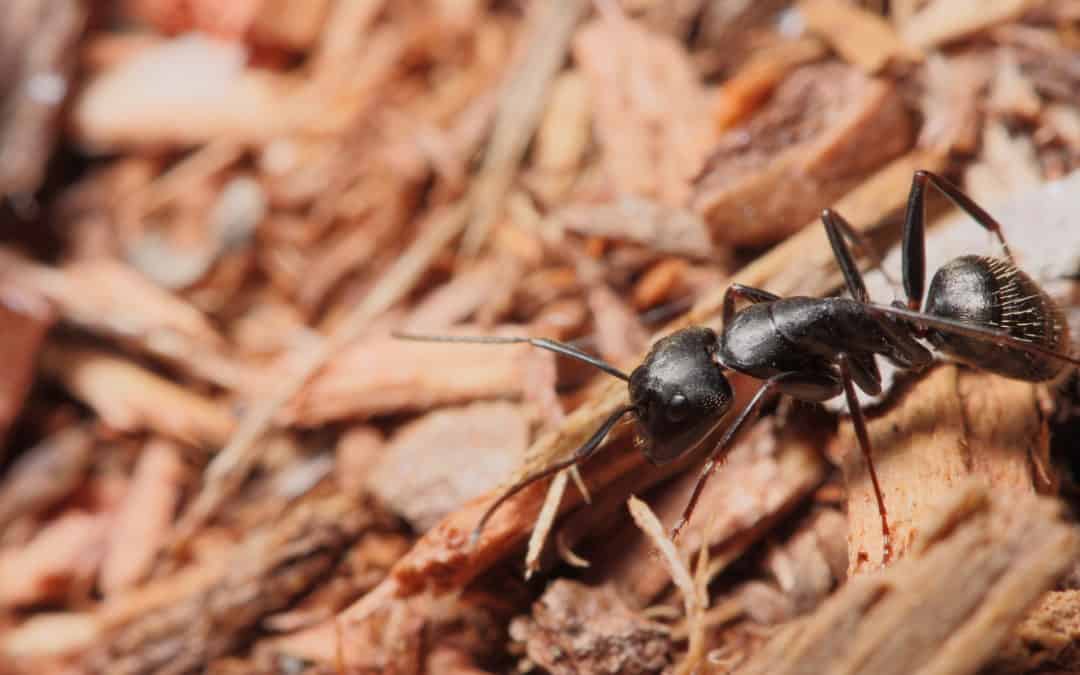
Every homeowner dreads discovering an ant infestation, whether inside or outside the home. Ants can be a major nuisance as they contaminate food, build their nests in unwanted places, and destroy property. One type of ant in particular, the carpenter ant, is considered a “silent destroyer,” often causing severe damage to homes undetected by excavating wood. These pests can be tough to eliminate but it is possible.
Carpenter ants are ½” to 5/8” long, and are usually red, black, brown, or a combination of these in color. These ants build their nests by creating smooth tunnels inside wood, preferring wet, damp wood. Common places carpenter ants will build their nests include tree stumps, fence posts, window and doorframes, firewood, and other various places with exposed wood. Carpenter ant nests can be problematic to your home as the tunnels they create can damage the structural soundness of wood throughout your property. If you notice sawdust or wood fragments falling throughout your property, there is a good chance that carpenter ants have infested.
Carpenter ants need a constant water source to survive. The first step in preventing ants like these is to eliminate moisture or standing water throughout your property. Consider using a dehumidifier in crawlspaces, basements, and attics to help with dampness. Trim your tree branches and shrubs away from your home, as ants can use these as an access point. Take it a step farther by looking around your property for any gaps or holes and sealing these up with caulk, as ants only need the smallest gap to get inside a house.
Preventing ants might seem like a daunting task; when ants infest it can seem like they are everywhere! Consider reaching out to your local pest control company where they can provide you with a prevention and treatment plan during peak ant season.
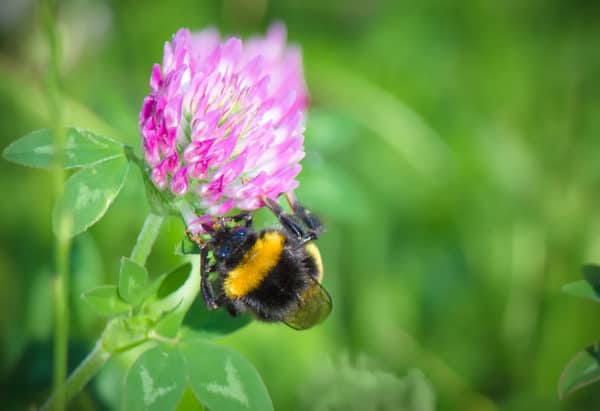
A household pest is any undesired animal that has a history of living, invading, causing damage to, eating food from, acting as a disease vector for, or causing any other harm to a human habitat. While most are considered a nuisance, household pests become dangerous when they pose a risk to health, property, or lifestyle. Household pests aren’t just limited to insects; they also include arachnids, rodents, and wildlife.
While household pests can be found year-round, some are more common in the summer months. Here are 8 of the most common summer household pests and how you can prevent them.
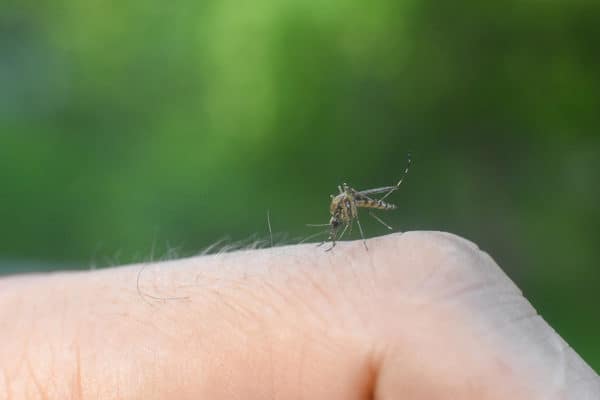
Mosquito season peaks in the summer months. The warm weather and humid environments accelerate their life cycle so they are able to reproduce in large numbers during this time. You are most likely to see mosquitoes when you have standing water on your property. Mosquitoes lay eggs in standing water and the hot, humid climate in summer is ideal for both breeding and to find food sources. Mosquitoes are dangerous to humans as they carry pathogens that can cause serious diseases like Zika and West Nile virus.
Mosquitoes can be prevented by:
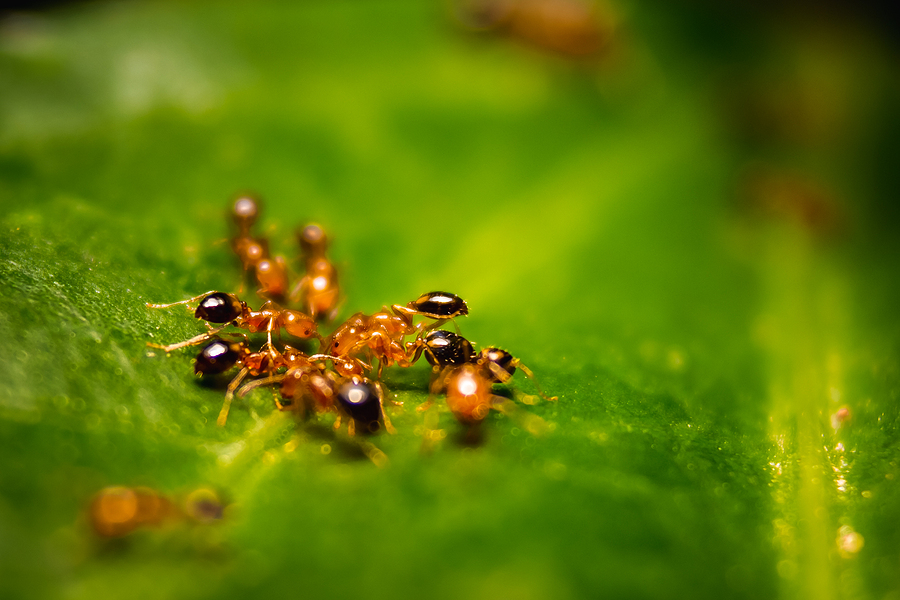
Ants hibernate in the winter and come out in full force over the summer. They have to forage in the summer months to feed their growing colonies and to build up their reserves for fall. Ants are usually seen indoors in the summer because they are searching for food and water as these can become scarce for them.
Ants can be prevented by:
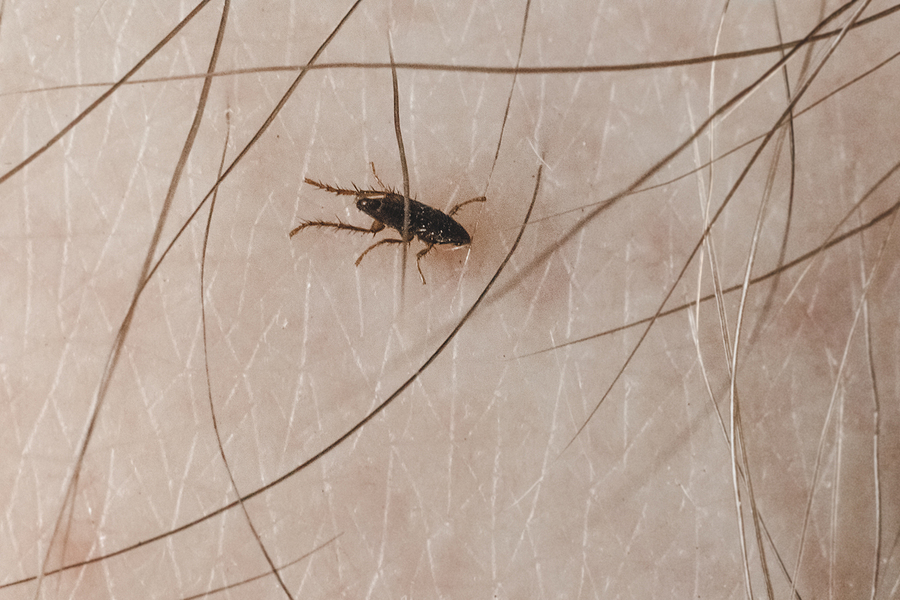
Fleas are prevalent in the summer months, although they can be found on pets year-round. Pets will indicate the presence of fleas by scratching and biting when they come in from outdoors.
Fleas can be prevented by:
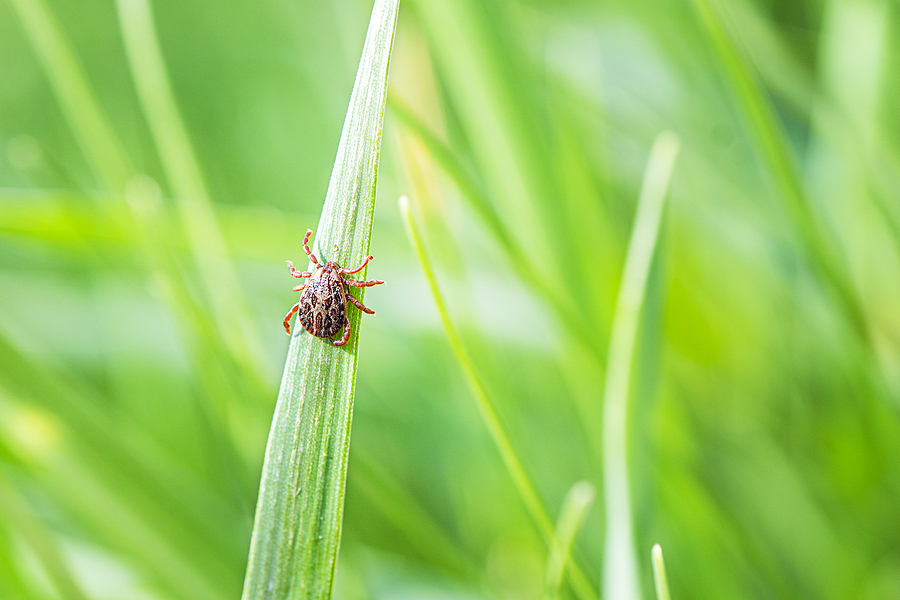
Ticks are problematic to humans and pets because they spread diseases like Lyme disease and Rocky Mountain spotted fever. Tick bites increase in the summer because people and animals are spending more time outside. The US is also seeing an increase in ticks because of the combination of mild winters and an increased population of deer and rodents which are known to carry ticks.
Ticks can be prevented by:
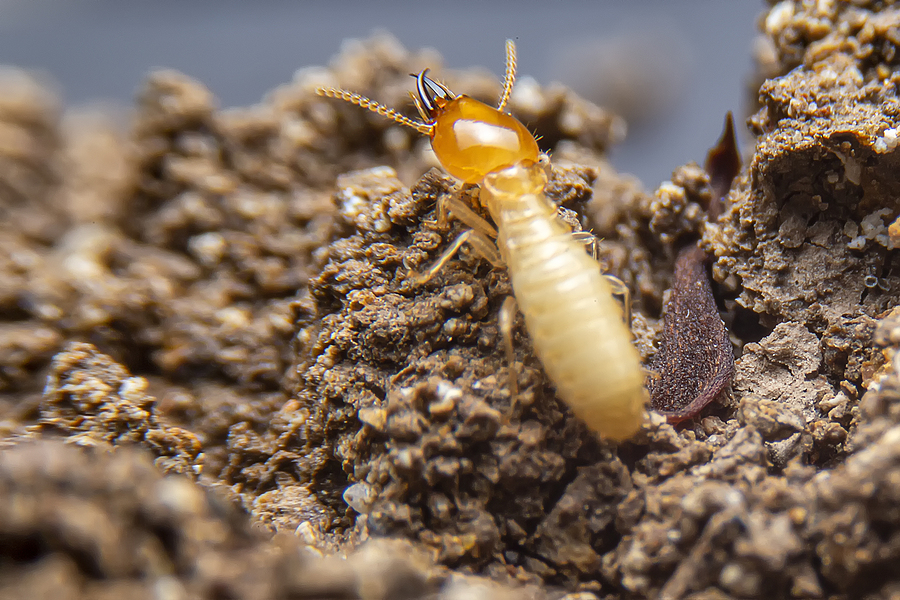
Termite swarming season is in the spring but these newly established colonies grow exponentially in the summer. Termites can go long periods of time undetected, causing significant damage to your home. It is important to keep an eye out for signs of termites so you can catch them early.
Termites can be prevented by:
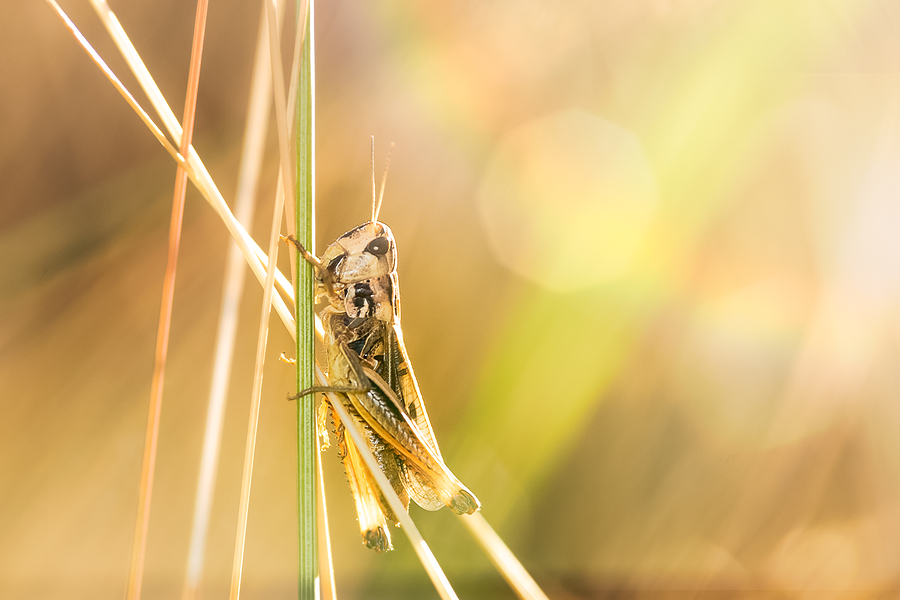
While most people view grasshoppers as just a nuisance pest, they can be devastating to gardeners and farmers. Grasshoppers can devour an entire field of crops in just a few days. Grasshoppers surge in large numbers in the summer months and are most prevalent in dry, hot summers. Grasshoppers can also cause damage to non-farmers as these are one of the only pests that can chew through screens.
Grasshoppers can be prevented by:
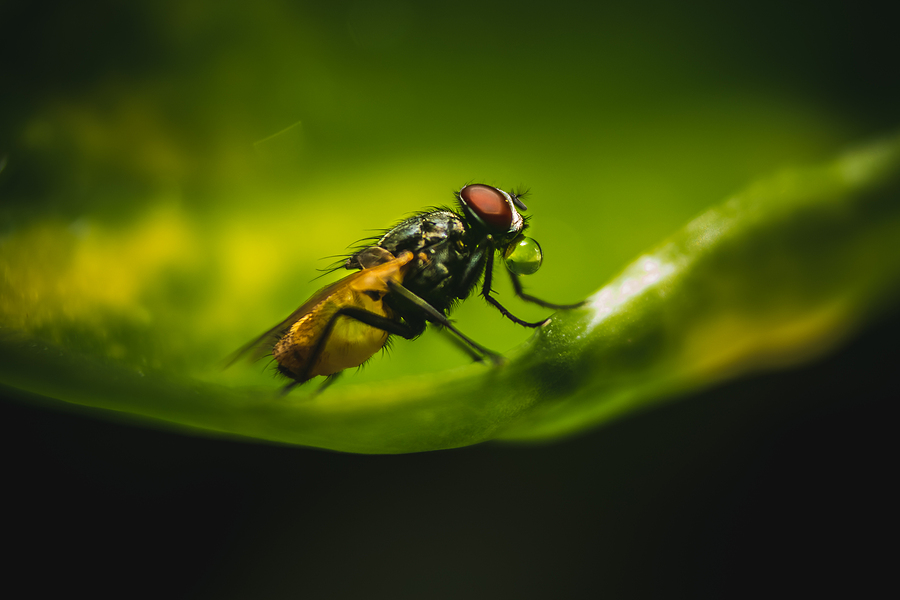
Flies invade your home in the summer months to escape the heat. They only reproduce during the hotter months and reproduce even more prolifically when they get indoors. Flies will stick around well into the fall months.
Flies can be prevented by:
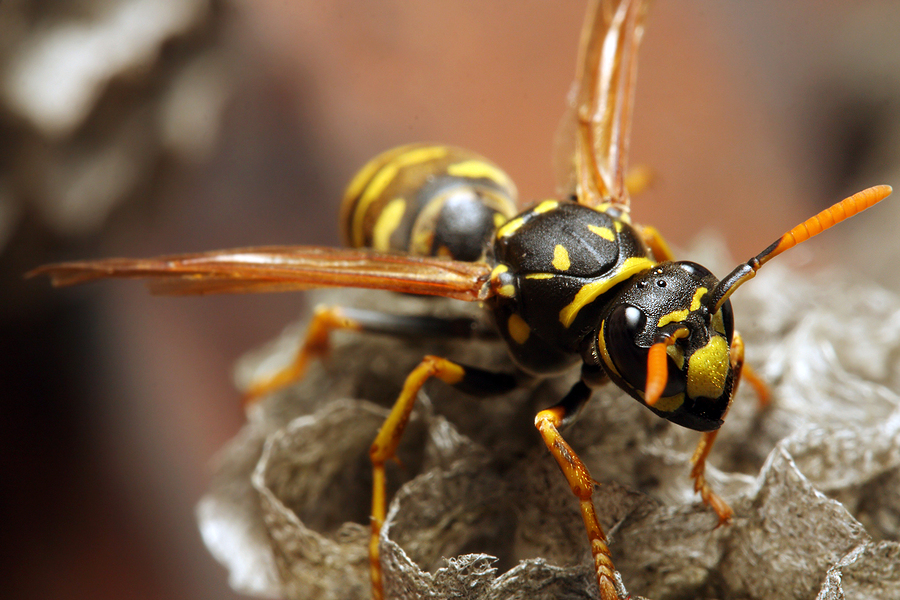
Stinging insects mate in the spring and their populations grow during the summer months. Hornets and yellow jackets are especially common in the summer because they have to establish new nests each year. These are usually found under decking or under piles of leaves. These stinging insects are potentially dangerous for people with allergies. Yellow jackets and bees can also get into the walls of homes, causing significant damage.
Stinging insects can be prevented by:
Don’t let these common summer pests ruin your summer. If you have a problem with any of these pests, contact a professional pest control company who can help eliminate them safely and prevent them going forward.
Termites: How to Stop Their Damage
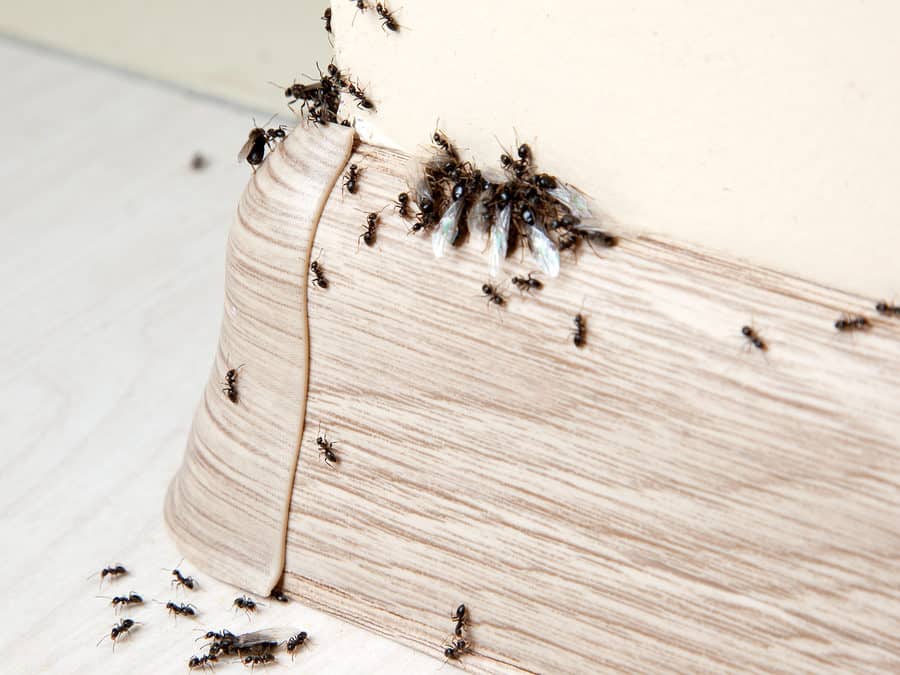
Ants are the #1 nuisance pest in America. They are one of the most challenging pests to control, along with bed bugs, because their colonies can number in the 1000s. Ants are considered commercial pests because they like to live close to people and eat the same things that we do. Ants can be seasonal pests or a year-round problem depending on the species. They will often enter our homes in the warmer months of the year in search of water and food. Most species, including fire ants and odorous house ants, will build their nests outdoors and come inside in search of food that they will collect and take back to their colonies. Other species like carpenter ants will actually make their way into your home and build their nests indoors. Ants are often found near food sources, moisture, and in hidden areas where they have protection and concealment such as wall voids, under floors, behind window frames, and under appliances. Ants in the bathroom and ants in the kitchen are the two most common scenarios when these pests make their way into your home, although they can be found in other rooms, as well.
Regardless of the species, when ants become a problem in your home it is often necessary to use a professional pest control company to help get them under control. Here are some important aspects to any successful ant control program:
One of the most important components to any ant control program is to properly identify the species of ant you are dealing with. Different species have different behaviors, prefer different environments, and have different diets so treatment will vary greatly between them. It is important to know where to find them and how to treat them to ensure success in eliminating and controlling them.
One of the main reasons ants come into your home is in search of food to take back to their colony. Eliminating things that attract them can help keep them from taking over your home. Clean up any food crumbs from kitchen floors and countertops and wipe them down frequently. Clean your appliances regularly. Empty your trash routinely and wipe the cans down. Clean outdoor grills and remove crumbs from tables, decks, and patios after each use. Keep foods, including pet food, in sealed containers. Place a bay leaf in canisters of dry food (such as flour) as the scent repels ants and other pantry pests. Rinse any empty containers before placing them in recycling bins. Get rid of any overripe fruit as this will attract ants, as well.
Ants need moisture to survive. Eliminating or reducing the moisture in your home can help prevent ants from coming inside. Repair any leaks around pipes and in your roof. Check gutters to make sure they are not clogged and ensure downspouts are directing rainwater away from foundations. Consider installing gutter guards to help prevent clogs. Thoroughly clean bathrooms with disinfectant cleaners and make sure shampoo, conditioner, and soap bottles are closed tightly and don’t have any leaks.
In order to get into your home, ants have to have a way inside. It is important to identify where they are gaining entry into your home to successfully control and eliminate them. Carefully inspect the exterior of your home and seal any holes, gaps, and cracks especially around areas where pipes and wires enter your home. Trim back shrubs and tree branches so they are not touching the sides or roof of your home. Keep mulch and timber at least 2 feet from your foundation. Move debris such as firewood, rock piles, boards, etc away from your home. Remove any tree stumps, fallen tree branches and logs from your yard. Repair any holes in window and door screens and replace weatherstripping.
As always, if you suspect you have an ant problem, contact a professional ant control company who can help you properly identify the species of ant you have and set you up with a thorough and comprehensive treatment and control plan.
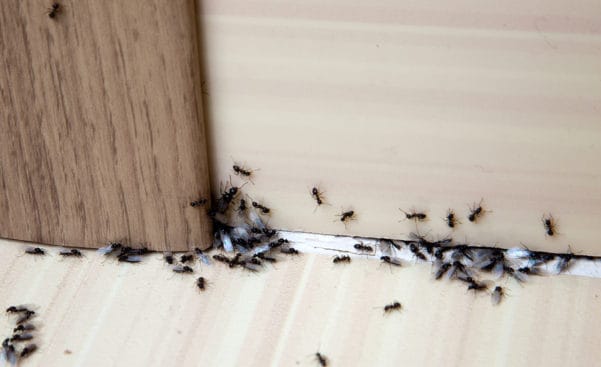
Ants are the most commonly reported pest in the country. While ants can be found just about anywhere in your home, the kitchen and bathroom are the most common rooms they are spotted in. Tiny black ants, also known as “nuisance ants,” or “odorous house ants,” invade your kitchen in search of food and water. While these nuisance pests are quite common, you may not know much about them. Here are 6 things you should know about these ants in your kitchen.
Ants don’t typically live indoors but instead establish colonies around your property. They will then make their way indoors in search of food and water. While odorous house ants can be quite a nuisance when they invade your kitchen, they don’t pose any significant risk to humans or their homes. These ants will feed on food and drink, especially sugary, sweet items and are attracted to crumbs and spills usually found in your kitchen. They don’t, however, bore through wood or cause structural damage to your home.
Ants in the kitchen are usually coming from somewhere and traveling to somewhere. If you follow their trail in both directions you can usually identify the food source that is attracting them. Cleaning up the spill or eliminating the food source will typically eliminate the ant problem. Ants can squeeze through openings the size of a pinhole, however, so while sealing up any entry points you find is a good idea, don’t be surprised if they make their way in again in the future.
Like most pests, ants are seasonal and incidences typically ebb and flow. Ants most commonly spike in the spring and summer when the weather warms up. This increase in temperature also increases their activity, driving them indoors in droves. They are also much more common following unseasonably warm winters. This is also swarming ant season which also increases their activity.
Ants are very social and have developed communication methods between each other. Ants can communicate through touch and through shared food. This communication helps them to avoid repellent remedies. Repellents like chalk that are placed in a line are often avoided by ants who just go around them. Spraying them with repellents will kill a few on contact but will typically just repel the rest, causing them to scatter but not die. A professional can treat ants with non-repellent products that they will take back to their colonies and disseminate among the entire population.
Different species of ants are attracted to different things and are treated in different ways. Proper identification is key to complete elimination. If you have an ant problem, try not to kill them all yourself because then your pest control company cannot identify them accurately. Best practice is to either leave them alone or try to collect samples by using tape to pick up a few and placing them in a Ziploc bag.
Ant control is difficult as they can get into your home through the tiniest of openings. Most ants are just a nuisance and can be gotten rid of by sealing your food and keeping spills and crumbs cleaned up. This does not, however, get rid of the colonies lurking outside your home waiting to get back in in search of food. If you suspect you have an ant problem or are having difficulty getting rid of an existing ant problem, contact a professional pest control company who can help properly identify the species of ant and provide the appropriate ant control techniques.
Can Termites Be Prevented or Is It Just Luck?
7 Tips For A Healthy Winter Lawn
Stop the Overwintering Pest Invasions

Ants are the most common household pest in the United States, especially during the summer months. As the weather warms up ants come indoors in search of food and water. While most ants are harmless, a few of them can cause problems for you and your home. Odorous ants can contaminate your food, carpenter ants can cause damage to wood structures, and fire ants will definitely sting if they feel threatened. When ants get into your home they can be found in kitchens, bathrooms, basements, and even around air conditioning units. Ants can be one of the hardest pests to get rid of. One key to controlling ants is through prevention. What can you do to keep these pests from ruining your summer? Check out these 14 tips for summer ant prevention.